- Register
- Log in to Tune-In
- Wishlist (0)
-
Shopping cart
(0)
You have no items in your shopping cart.
Beatles News
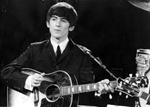
The Beatles had several successful albums that are still regarded today as classics. While each Beatles member felt differently about each album, one of their best-selling albums left George Harrison feeling “cold and bored.”In 1967, The Beatles released Sgt. Pepper’s Lonely Hearts Club Band. The album was a pivotal moment in the band’s tenure as it found the band at its most experimental. Many of the tracks were notable for their unique instruments, surreal lyrics, and psychedelic sounds. Even the artwork for the album featured The Beatles in a colorful collage, dressed in distinct outfits.
The album was immediately influential as the fashion and music of the late 1960s began to reflect what The Beatles captured in Sgt. Pepper’s. Upon its release, the album peaked at No. 1 on the official charts in the U.K. and on the Billboard charts in the U.S. 2.5 million copies had been sold in its first three months, making it the most successful Beatles album then.
Source: Ross Tanenbaum/cheatsheet.com
details
Paul McCartney reacted differently to The Beatles’ “Get Back” than other people did. When others wanted it to be a single, he decided to “give up” and let them have their way. “Get Back” was different from all The Beatles’ other No. 1 singles in a major way.
Paul McCartney said he didn’t initially want The Beatles‘ “Get Back” to become a single. Subsequently, he revealed why he changed his mind. Notably, “Get Back” became a hit twice in the United Kingdom.During a 2002 interview with Hot Press, Paul discussed his then-recent album Driving Rain. He said Ringo Starr helped choose the song “From a Lover to a Friend” as the album’s lead single. “He was in L.A. and we’d been doing a bit of recording and me and Heather [Mills] went round to see him and Barb [Bach] for, like, dinner,” Paul recalled.
Source: Matthew Trzcinski/cheatsheet.com
details
In 1962’s final moments, the Beatles were in one of the last places they wished to be. They were wrapping up their final club residency in Hamburg, where they’d cut musical teeth worthy of a lion’s mouth.
But Hamburg wasn’t where the Beatles believed the action was. Their first single, “Love Me Do,” had popped in the autumn, reaching No. 17 in the charts. The band was anxious to get back in the studio and throw themselves headlong into a future they hoped would be replete with triumph upon triumph.
We tend to be a lot like those Hamburg Beatles ourselves at the end of December. We’re so often not where we wish to be, an idea that transcends geography. The thinking is: 11:59 will become 12:00, Dec. 31 bumped aside for Jan. 1, and we can get started again properly.
Source: Colin Fleming/nypost.com
details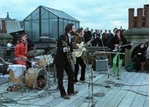
The Beatles played their last concert together in 1969 on the rooftop of Apple Corps music headquarters. They had already stopped touring in 1966 so this one last hurrah was a major event. They originally had much bigger plans for the show, but simplified it to the rooftop show according to Ringo Starr.Starr was a guest on the Broken Record with Rick Rubin podcast on Sept. 21, 2021 to discuss his pandemic EP, Zoom In. The Beatles: Get Back was about to come out that December. So Starr also reflected on the rooftop concert that concludes that miniseries.
The Beatles rooftop concert was to perform the songs on their Let It Be album. Those were the sessions depicted in the original Let It Be documentary and the restored Get Back. Starr remembers Let It Be director Michael Lindsay-Hogg’s original grand ideas.
“With the roof show, we had gone through that let’s do it in Alaska, let’s do it on Mt. Everest,” Starr said on Broken Record. “Michael Lindsay-Hogg was pushing for this Roman dome drone thing in somewhere, God knows where. Anyway, we said ah, I think it was Paul, ‘Let’s do it on the roof.’ Okay, we’re playing live. It all happened after th details
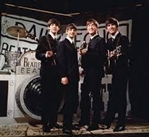
Elvis Costello said The Beatles’ “I Saw Her Standing There” said something about Paul McCartney. He discussed the way Paul and John Lennon were seen by the public. Paul reacted to people who felt his songs were too “soppy.”
Elvis Costello said The Beatles‘ “I Saw Her Standing There” contradicted a “cliche” about Paul McCartney and John Lennon. Subsequently, he said the cliche was not actually true. Notably, one of Paul’s most famous songs was a response to a persistent criticism of him.
Paul was the primary creative force behind some of The Beatles’ most famous ballads, such as “And I Love Her,” “The Long and Winding Road,” and “Yesterday.” Meanwhile, John gave was the main songwriter behind avant-garde tracks like “Revolution 9” and “Strawberry Fields Forever.”
In a 2022 article from Stereogum, 80 different artists spoke about Paul. In the article, Costello discussed the perception of John and Paul. “The cliche for Lennon and McCartney is that Paul is the sweet one and John is the edgy one,” Costello said.
Source: Matthew Trzcinski/
cheatsheet
details

Paul McCartney's former wife's love of cooking was passed on to his family and children
Once the music icon relocated his children to Scotland to raise them far from the spotlight
Paul is a proud father of 5 children and grandfather of 8 grandchildren. He loves to keep in touch with them
Paul McCartney, the former bassist of the iconic band The Beatles, is now spending quality time with his family after many years of fame. He has enjoyed massive success as a musician, but what he cares most about is the happiness and well-being of his family.
Paul has successfully balanced his responsibilities as a father and a rock star. As he soared to stardom in the past, he made sure to keep his children out of the limelight and give them a chance to experience a normal childhood.
Paul shot to immense stardom as the bass guitarist of the famous English band The Beatles, but for his five children — Heather, Mary, Stella, James, and Beatrice McCartney, he is a loving father.
Paul has said that being a parent is the most rewarding thing he has ever done, even though he's had many number-one hits and toured the world with his music, playing classic songs like "Hey Jude" and "Come Together."< details
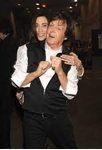
Paul McCartney and his multimillionaire wife surprised a Polish couple by entering their quaint café.
His wife and grandchildren always keep him grounded.
The singer and his wife recently marked 11 years of marital bliss.
Despite being one of the world's most successful and well-known musicians, former The Beatles member Paul McCartney has always maintained a low-key lifestyle with his family.
McCartney and his wife Nancy Shevell have lived a simple life amidst their fame and fortune for over a decade. They frequently dine in ordinary cafés and eateries, enjoying life's simple pleasures. Fans have long admired the iconic musician's humble demeanor.
Source: Christell Fatima M. Tudtud/news.amomama.com
details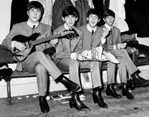
Ringo Starr’s steady beat and underrated skills behind the drum kit made him the perfect drummer for The Beatles. It’s not a coincidence that the Fab Four shot to stardom soon after Ringo joined. Still, it wasn’t a cakewalk. Ringo said joining The Beatles was like going to school, and not just because he had to learn new songs.
Ringo was well known to The Beatles before they asked him to join.
Various childhood illnesses kept him out of school for years, but he discovered his passion for drumming during one hiatus. He never completed his childhood schooling, but that might have been a wise choice. Ringo built a reputation as Liverpool’s best drummer with Rory Storm & the Hurricanes, who performed in Hamburg, Germany, during some of The Beatles’ residencies there.
Source: Jason Rossi/cheatsheet.com
details
When The Beatles first exploded in popularity they set out on tours around the UK. The Fab Four squeezed into a small car and drove around Blighty to play their music to the growing fanbase that would create Beatlemania. But, considering Ringo Starr was the final member of the band to join the group, he was the last person the rest of the team wanted to sleep with in hotels around the country.
Starr was recruited into The Beatles in August 1962 after they dropped their first drummer from the band, Pete Best. While he gelled with the band musically and personally quickly, he was still an outsider joining the tight-knit threesome of pals John Lennon, Paul McCartney and George Harrison.
Source: Callum Crumlish/express.co.uk
details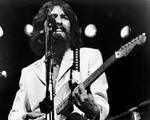
George Harrison said the Concert for Bangladesh was a “stroke of luck” because there was no rehearsal. Thankfully, everything went to plan during the benefit concert.
In late 1971, Shankar told George about the humanitarian crisis in East Pakistan.
A devastating cyclone killed 500,000 people. After months of inaction from the West Pakistani government, people wanted a change. Eastern nationals declared themselves the independent country of Bangladesh. It started a bloody war. The Western Pakistani troops committed genocidal acts on the Bengali people.
“The more I read about it and understood what was going on, I thought, ‘Well, we’ve just got to do something,’ and it had to be very quickly,” George told Fugelsang. “And what we did, really, was only to point it out. That’s what I felt.”
Source: Hannah Wigandt/cheatsheet.com
details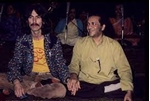
George Harrison said his only ambition was to be God-conscious, not to be a rock star. Although, his career as a guitarist led him to spirituality.
If George never became a rock star, he might not have become spiritual.
Spirituality came to George after a series of coincidental events. First, he heard Indian music on the set of The Beatles’ Help! When he started learning sitar, friends told him about Ravi Shankar.
Around this time, George took LSD for the first time and said it opened his mind up to “God-consciousness.” However, he didn’t know what that meant.
In 1965, George met Shankar, who immediately wanted to teach George everything he knew. The most important lesson Shankar taught George was that God is sound and that by playing the right notes, one can connect to God.
In 1966, George, his wife, Pattie Boyd, and Shankar took a six-week trip to India. George began learning about meditation and yoga. A year later, George learned Transcendental Meditation from the Maharishi Mahesh Yogi.
Source: Hannah Wigandt/cheatsheet.com
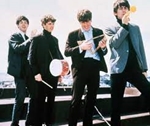
Some of The Beatles had different feelings on one of The Beatles’ songs from Abbey Road. An anvil was used as an instrument on the song. John felt the track was incredibly expensive.
A song from The Beatles‘ Abbey Road uses an anvil as an instrument. A sound engineer said Paul McCartney and John Lennon had conflicting opinions about the song. On the other hand, George Harrison called the song “fruity” but felt it was well-executed.
Geoff Emerick worked as a sound engineer on The Beatles’ Revolver, Sgt. Pepper’s Lonely Hearts Club Band, and Abbey Road. In a 2022 interview with MusicRadar, he recalled the creation of “Maxwell’s Silver Hammer.” “There were two struggles going on with this song: Paul and John fighting over whether it should even exist!” he said.
“John called it ‘more of Paul’s granny music,'” Emerick added. “But there was my own struggle coming up with the sounds that should go on it.”
Source: Matthew Trzcinski/cheatsheet.com
details
Paul McCartney’s destiny was to be a musician. That didn’t stop the Beatles bassist from considering other types of employment as a young man, however. He considered several options. One, however, seemed very idealistic and practical, much like McCartney himself. The musician once dreamed of becoming a “faithful” truck driver “going long distances”.
Per Britannica, McCartney’s young life in Liverpool, England was typical of the working class. His father Jim worked at the Liverpool Cotton Exchange. Mother Maria was a midwife.
The McCartney extended family were all hard workers who also knew how to have fun. Jim was the leader of Jim Mac’s Jazz Band and passed his love of music on to his two sons, Paul and Michael. However, the senior McCartney believed that while making music was a nice hobby, a full-time life as a musician was not the way to support a family. So he begged his son to find a permanent, full-time job.
Source: localtoday.news
details
George Harrison‘s first wife, Pattie Boyd, reflected on her life as a Beatles wife in a new interview upon publication of her book, Pattie Boyd: My Life in Pictures. She discussed George’s impact on her life and revealed he would be the person she would love to have one last conversation with.At 19 years old, Boyd was sent by her modeling agency to Paddington Station on Mar. 2, 1964, for a small part in The Beatles’ first film, A Hard Day’s Night. She met John Lennon, Paul McCartney, Ringo Starr, and George Harrison, whom Boyd said “was the best-looking man I had ever seen,” according to Far Out Magazine.
Harrison appeared to be equally as smitten with Boyd, for as filming ended for the day, Harrison asked the young model, “will you marry me?” When she didn’t respond, he continued: “Well, if you won’t marry me, will you have dinner with me tonight?”
Boyd had a boyfriend, so she declined. However, after breaking it off with photographer Eric Swayne, she was asked to take care of her final obligations for the film, where she met the guitarist again. Harrison reiterated his dinner offer, and Boyd accepted. From that moment on, they we details
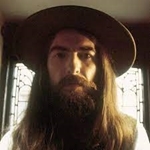
Music copyright remains one of the most complicated issues in the business, especially regarding sampling. It is also utterly hard to draw a line between where inspiration ends and straight-up plagiarism begins. All in all, being inspired by something is almost inescapable and not quite the same as copying.
Considering that good old music has formed the basis of numerous great new tracks, labeling even the slightest inspiration as plagiarism doesn’t seem reasonable. Even the best musicians have been inspired by someone else’s work while trying to create something new, yet they have managed to produce an original brand new piece of work, although they have added something from those already in existence.
However, no one can deny that it is still challenging to decide where the inspiration really ends and plagiarism starts. So not surprisingly, the majority of artists have struggled with legal battles regarding copyright issues. The late Beatle George Harrison also found himself at ends with the law due to the suspiciously familiar melody of his 1970 song ‘My Sweet Lord.’
Source: Bihter Sevinc/rockcelebrities.net
